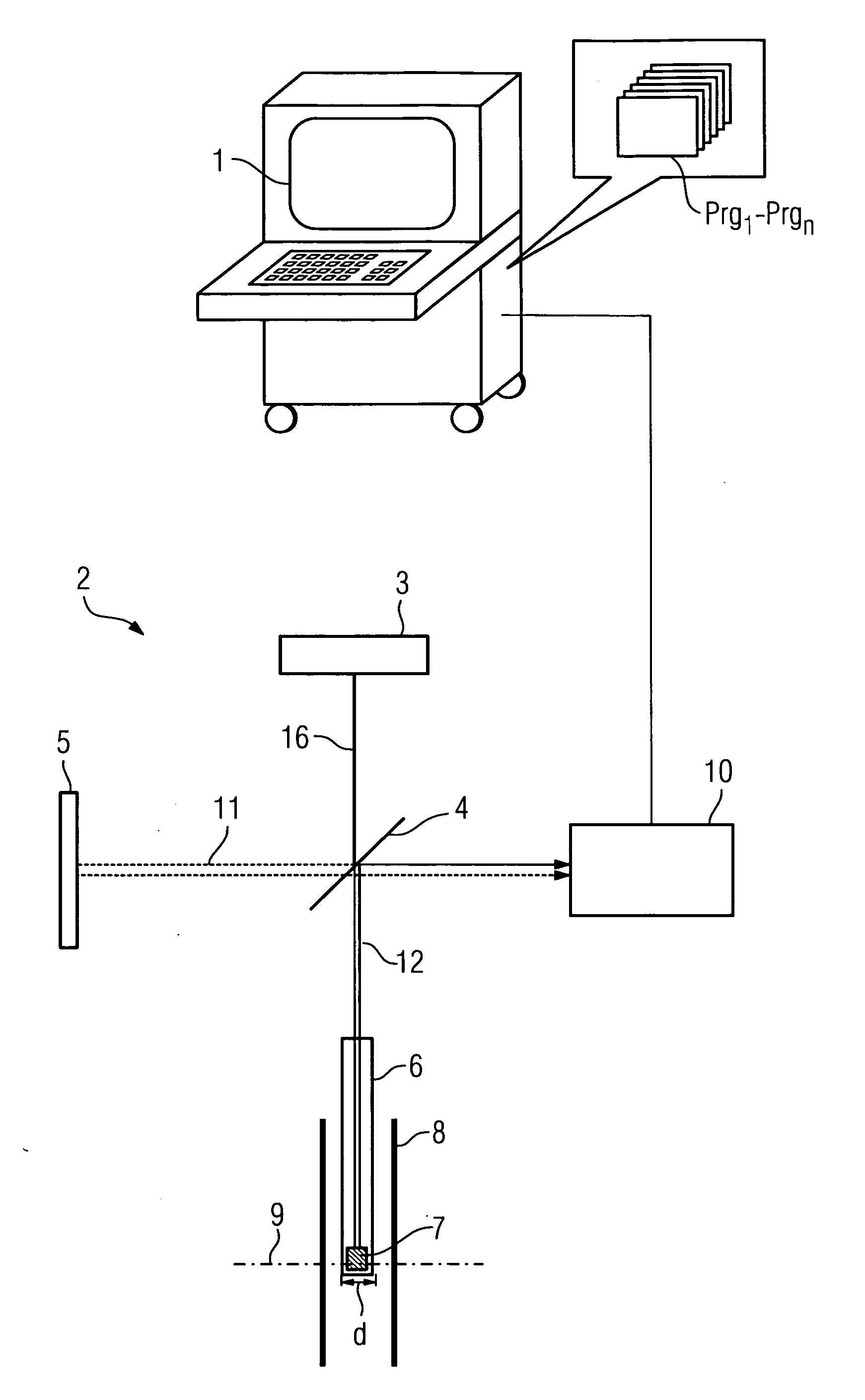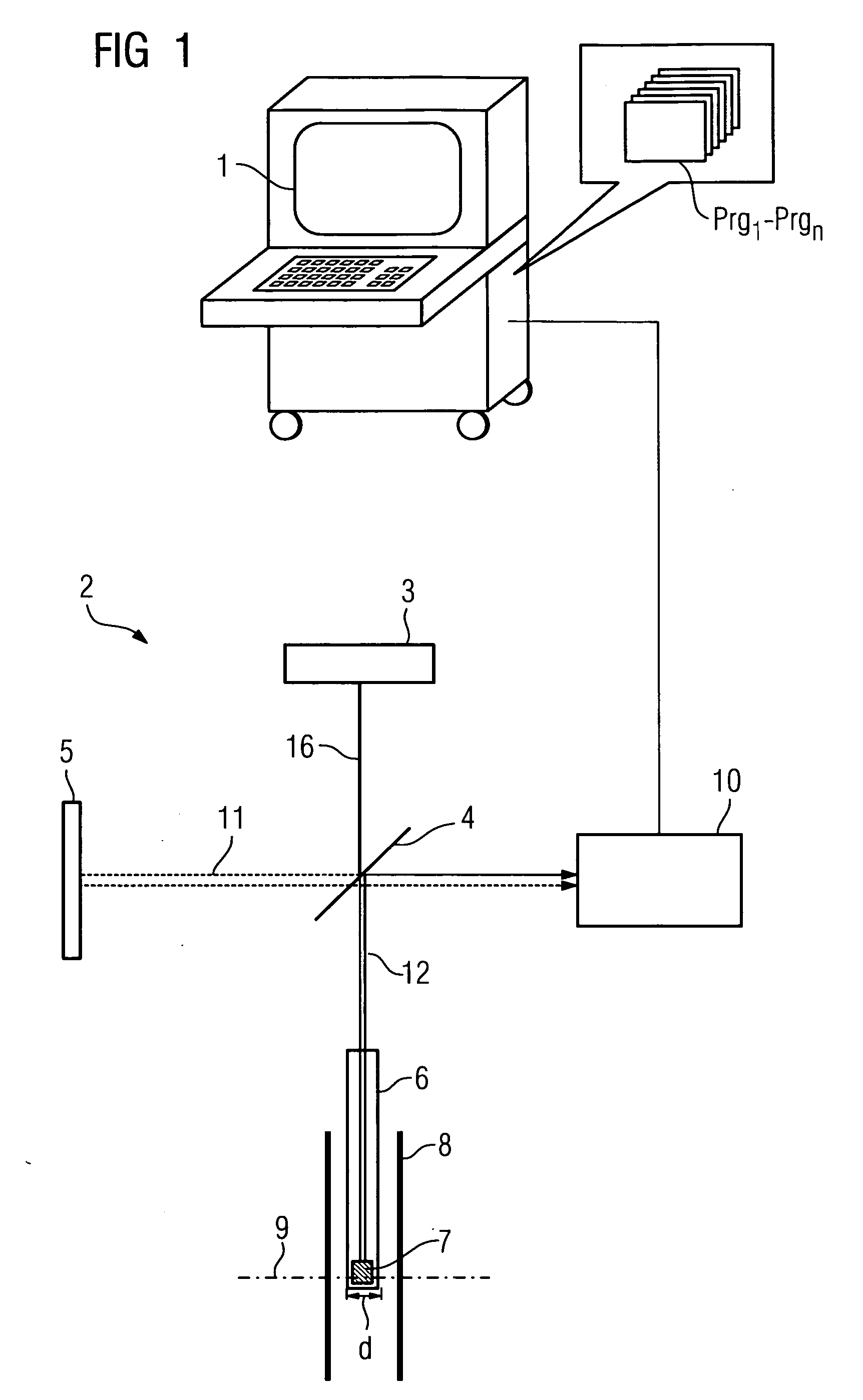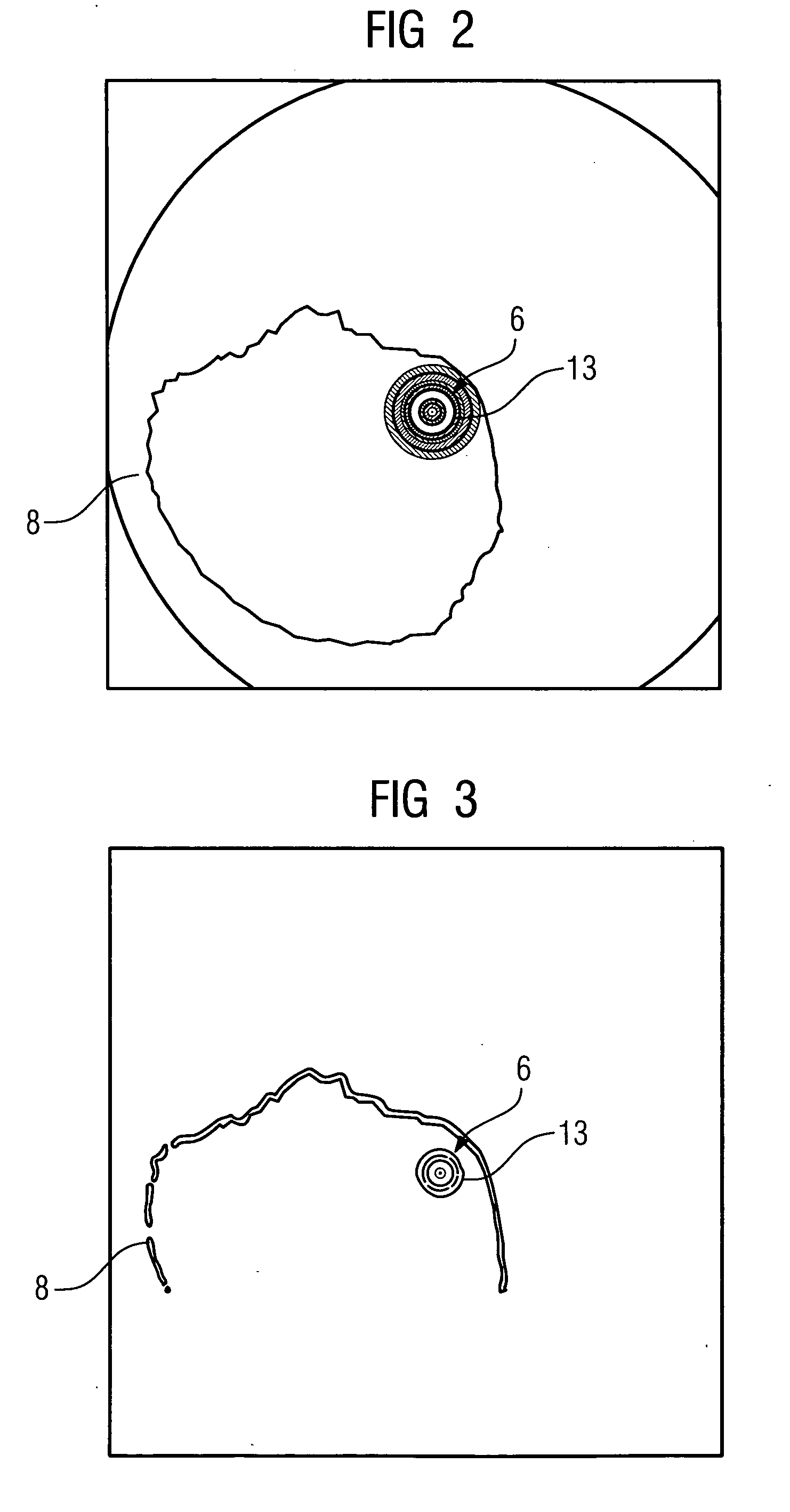Method for tomographically displaying a cavity by optical coherence tomography (OCT) and an OCT device for carrying out the method
a tomographic and cavity technology, applied in the field of tomographically displaying cavities, can solve the problems of inability to utilize oct for examination, inability to recalibrate manually, and limited use of o
- Summary
- Abstract
- Description
- Claims
- Application Information
AI Technical Summary
Benefits of technology
Problems solved by technology
Method used
Image
Examples
Embodiment Construction
[0039]FIG. 1 shows an OCT device known per se with a computing unit 1 and the actual OCT unit 2. This is constructed from a laser 3 which, via a common light path 16, emits coherent light radiation to a semi-transparent mirror 4. At this semi-transparent mirror 4 a portion of the light is guided on the measuring path 12 to the scanning head 7 of the catheter 6 where the surroundings of the blood vessel 8 (schematically shown here) are scanned in a plane 9. The reflected light is then returned to the measuring path 12 and reflected at the semi-transparent mirror to the subsequent detector 10. At the same time, a decoupled portion of the light is conveyed to the reference path 11 at the semi-transparent mirror 4. A mirror 5, which conveys the light back and through the semi-transparent mirror 4 to the detector 10, is located in this reference path 11.
[0040] The two overlapping light beams are detected in the detector in the region of the scanning head 7 with respect to their interfer...
PUM
 Login to View More
Login to View More Abstract
Description
Claims
Application Information
 Login to View More
Login to View More - R&D
- Intellectual Property
- Life Sciences
- Materials
- Tech Scout
- Unparalleled Data Quality
- Higher Quality Content
- 60% Fewer Hallucinations
Browse by: Latest US Patents, China's latest patents, Technical Efficacy Thesaurus, Application Domain, Technology Topic, Popular Technical Reports.
© 2025 PatSnap. All rights reserved.Legal|Privacy policy|Modern Slavery Act Transparency Statement|Sitemap|About US| Contact US: help@patsnap.com



